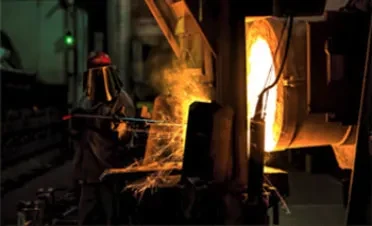Best Practices for Effective Die Casting Process Implementation and Optimization
Die Casting Guidelines Maximizing Efficiency and Quality
Die casting is a highly efficient manufacturing process that enables the production of complex metal parts with excellent dimensional accuracy and surface finish. It is widely used in various industries, including automotive, aerospace, electronics, and consumer goods. However, to achieve optimal results, it is essential to adhere to die casting guidelines that help maximize efficiency, reduce waste, and ensure product quality. This article outlines some fundamental guidelines for die casting that can significantly impact the overall production process.
1. Material Selection
The choice of material is one of the most crucial aspects of the die casting process. Commonly used materials include aluminum, zinc, magnesium, and copper alloys. Each material has its properties that make it suitable for specific applications. For instance, aluminum is lightweight and offers excellent corrosion resistance, making it ideal for automotive parts. Zinc, on the other hand, is known for its high fluidity and low melting point, allowing for thin-walled sections. When selecting a material, consider the application requirements, including mechanical properties, weight, corrosion resistance, and cost.
2. Die Design
The design of the die significantly influences the casting process and the final product's quality. A well-designed die should facilitate easy ejection of the part, minimize defects, and ensure uniform cooling. Key considerations in die design include gate location, cooling channels, and draft angles. Gates should be positioned to promote smooth filling and avoid air traps. Cooling channels should be strategically placed to provide uniform cooling and reduce thermal distortion. Additionally, appropriate draft angles ease part ejection and reduce wear on the die.
3. Process Control
Maintaining strict process control is essential for high-quality die casting. This includes regulating parameters such as temperature, pressure, and fill rate. The molten metal should be poured at the correct temperature to minimize porosity and ensure proper flow into the die cavity. The injection pressure must be sufficient to fill the mold while preventing excessive turbulence, which can lead to defects. Monitoring these parameters in real-time and making adjustments as necessary can help maintain consistency in production.
die casting guidelines

Implementing rigorous quality assurance (QA) measures throughout the die casting process is vital for identifying and addressing defects early. QA should encompass incoming material inspections, in-process checks, and final product evaluations. Techniques such as non-destructive testing (NDT) and dimensional inspections can help detect surface and internal flaws. Developing a quality management system that incorporates these inspections will help ensure that only parts meeting specification reach the customers.
5. Maintenance of Equipment
Regular maintenance of die casting machinery is critical for sustaining production efficiency and extending equipment lifespan. Diligent maintenance practices include routine cleaning, lubrication, and inspection of machine components. Scheduled downtime for maintenance can prevent unexpected breakdowns, reduce repair costs, and improve overall productivity. Additionally, investing in modern machinery with advanced features can enhance performance and reduce cycle times.
6. Training and Workforce Development
A well-trained workforce is essential for implementing die casting guidelines successfully. Employees should be educated on the die casting process, equipment operation, material properties, and quality control measures. Continuous training and skill development programs foster a culture of quality and efficiency, ensuring the team is equipped to handle challenges that may arise during production.
7. Sustainability Practices
As industries increasingly prioritize sustainability, incorporating eco-friendly practices into the die casting process is essential. This includes the use of recyclable materials, waste reduction strategies, and energy-efficient techniques. Implementing practices such as recycling scrap metal and optimizing energy usage not only benefits the environment but can also lead to significant cost savings in the long run.
Conclusion
Adhering to die casting guidelines is crucial for manufacturers aiming to enhance product quality, reduce production costs, and improve operational efficiency. By emphasizing material selection, die design, process control, quality assurance, equipment maintenance, workforce training, and sustainability, companies can optimize their die casting operations. In doing so, they not only meet customer demands effectively but also strengthen their competitive position in the market. By prioritizing these best practices, manufacturers can ensure that their die casting processes contribute positively to their bottom line while fostering a responsible approach to manufacturing.
-
Precision Sheet Metal Stamping Manufacturer | Fast & ReliableNewsAug.01,2025
-
OEM Sand Cast Pump Valve Fittings - Baoding Hairun Machinery And Equipment Trading Co., Ltd.NewsAug.01,2025
-
Custom OEM Impellers | High Efficiency & PrecisionNewsAug.01,2025
-
OEM Sand Cast Pump Valve Fittings - Baoding Hairun Machinery | Customization, Quality AssuranceNewsAug.01,2025
-
OEM Sand Cast Pump Valve Fittings - Baoding Hairun Machinery And Equipment Trading Co., Ltd.NewsAug.01,2025
-
OEM Sand Cast Pump Valve Fittings - Baoding Hairun Machinery And Equipment Trading Co., Ltd.NewsJul.31,2025















